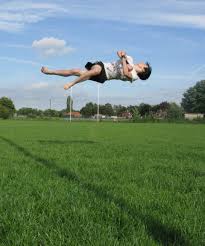Twisting techniques takes timing, coordination, and quick calculating. Remember, the more rotations you create in the twisting motion the more you increase the accerlation of the technique itself. Calculate the velocity with the additon of weight and gravity in order to figure out the maximum height you can reach in terms of jumping. When you have an idea of your jumping capabilities you can than figure out how many rotations you can pull off in that one jump. The rotations also help in gaining more hang time from friction with the air resistance from the. The twist demands excellent body execution with the right amount of momentum in to gain the amount of rotations you wish to achieve and once your in the air it all depends on keeping your center gravity focused the direction of the rotations. Placing your arms closer to your center gravity also helps in faster accleration in rotating and better control of the twist. Timing comes into key of when to land in order to avoid having all of the kinetic energy created from the twist going through a single point in the body which will cause injury. Use your eyes to spot the place you planned to land in order to have a cleaner landing. When you begin to get used the physics of twisting you can begin to try out the more advanced techniques that require strong whipping force from the legs and flipping mixed in to add more aero dynamic efficieny. Some of the more advanced parkourists use these techniques in order to gain more height from already high points in order reach higher ledges or get over obstacles.
Examples:

Butterfly twist
-does not take much height and can be done from a stand still position, but requires a lot of built up potential energy.

Corkscrew
-similar to the butterfly twist, but instead goes into both a twisting and flipping motion that helps greatly in gaining more hang time and flips.
Please comment tmy blog and thank you for reading.
Tuan Tran
Cool blog!
ReplyDelete